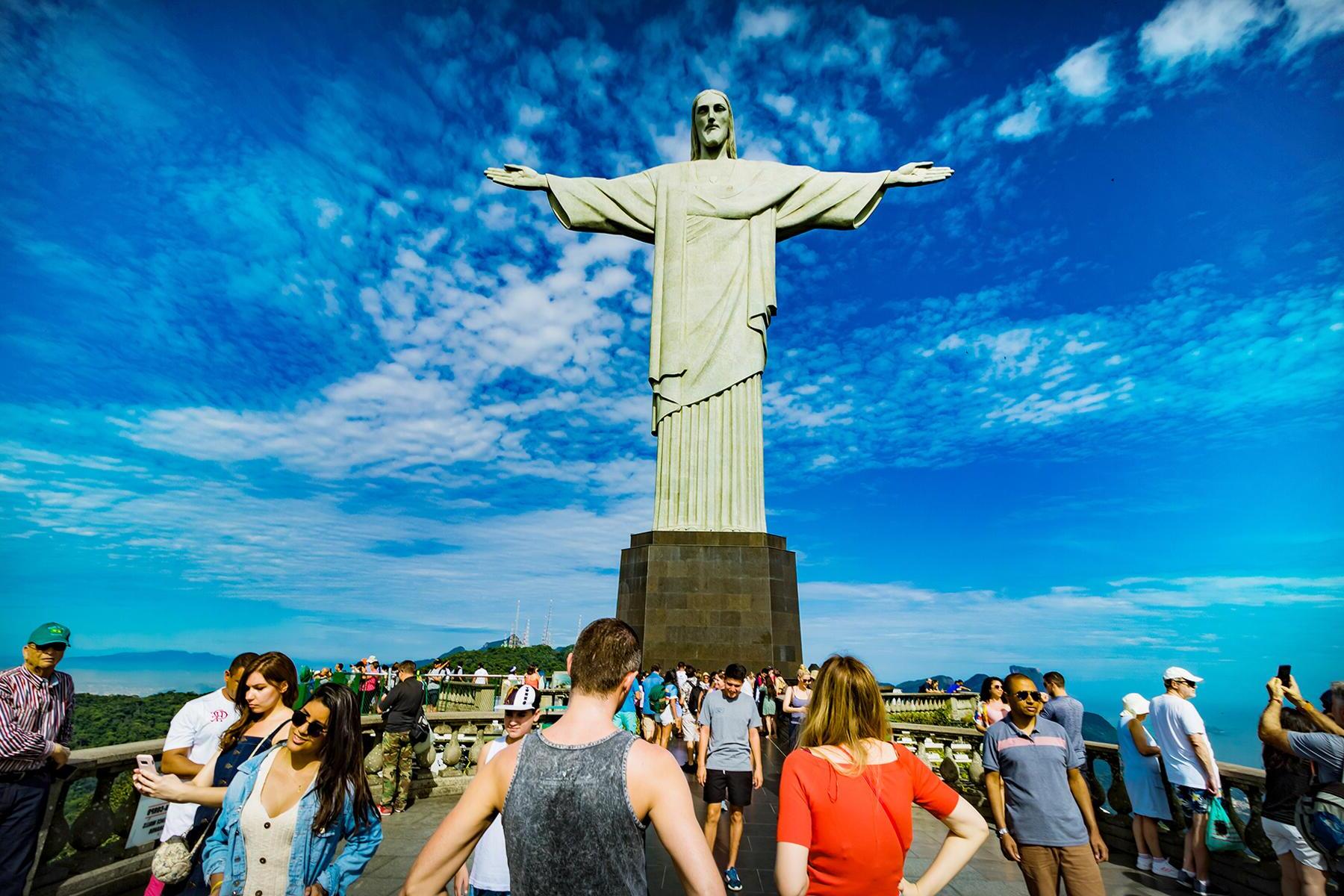
Ever wondered about the towering figure that embraces Rio de Janeiro with open arms? Christ the Redeemer stands as not just a symbol of peace but also as an icon of Brazilian culture and faith. This colossal statue, perched atop Mount Corcovado, offers more than just breathtaking views; it holds stories, mysteries, and fascinating facts waiting to be uncovered. Have you ever pondered how such a massive structure was built or what secrets it might hold? Well, you're in for a treat! We're about to dive into 20 mind-blowing facts about Christ the Redeemer that will make you see this marvel in a whole new light. From its construction challenges to its global significance, get ready to be amazed by what this iconic monument has to offer.
Key Takeaways:
- Christ the Redeemer is an iconic symbol of peace and faith, towering over Rio de Janeiro, Brazil, and attracting millions of visitors each year.
- The statue's construction involved innovative engineering and materials, and its enduring presence symbolizes hope and resilience for the people of Rio de Janeiro.
What Makes Christ the Redeemer So Special?
Christ the Redeemer stands as a symbol of peace and welcome, towering over Rio de Janeiro, Brazil. This iconic statue is not just a marvel of engineering but also a testament to Brazil's faith and culture. Christ the Redeemer is recognized worldwide, not only for its impressive size but also for its stunning location atop the 700-meter-high Corcovado Mountain, offering breathtaking views of the city below.
- Constructed between 1922 and 1931, this monumental statue is a masterpiece of Art Deco design.
- It's one of the New Seven Wonders of the World, a testament to its global significance and beauty.
The Design and Construction of Christ the Redeemer
Creating such an imposing figure was no small feat. The statue's design and construction involved meticulous planning and innovation, blending artistic vision with structural integrity.
- Made primarily of reinforced concrete and soapstone, materials were chosen for their durability and weather resistance.
- The statue stands 30 meters tall, not including its 8-meter pedestal, and its arms stretch 28 meters wide.
- To reach the site for construction, workers had to transport materials up the mountain by railway, a challenging task given the steep and rugged terrain.
Cultural and Religious Significance
Beyond its architectural achievements, Christ the Redeemer serves as a potent symbol of Christianity, representing the welcoming and open arms of Jesus Christ towards the city and its residents.
- It's a major site of Christian pilgrimage, attracting millions of visitors and worshippers from around the globe each year.
- The statue's location, overlooking Rio de Janeiro, is symbolic, meant to protect the city and guide its citizens.
Challenges and Preservation Efforts
Maintaining such an iconic structure is not without its challenges. Over the years, Christ the Redeemer has faced various threats, from weathering to vandalism.
- Lightning strikes have damaged the statue several times, leading to the installation of lightning rods to protect it.
- Efforts to preserve the statue include regular maintenance and cleaning, ensuring its longevity for future generations to admire.
Christ the Redeemer in Popular Culture
This iconic statue has transcended its religious origins to become a cultural phenomenon, appearing in numerous films, photographs, and artworks.
- It's a popular backdrop in movies and TV shows, symbolizing not just Rio de Janeiro but Brazil as a whole.
- The image of Christ the Redeemer has become synonymous with Brazilian pride and identity, featured on everything from postcards to promotional materials for major events.
The Impact on Tourism
As one of the most visited attractions in Brazil, Christ the Redeemer plays a significant role in the country's tourism industry.
- Visitors can take a train up Corcovado Mountain to reach the statue, offering panoramic views of the city along the way.
- The site's popularity has spurred the development of nearby amenities and services, catering to the needs of international tourists.
Environmental Considerations
The statue's presence on Corcovado Mountain raises questions about environmental impact and conservation efforts in the area.
- Authorities have implemented measures to minimize the ecological footprint of tourism, promoting sustainable visitation practices.
- The surrounding Tijuca National Park, a vast area of Atlantic rainforest, provides a green backdrop to the statue and serves as a reminder of the importance of preserving natural beauty.
A Beacon of Hope
In times of crisis or celebration, Christ the Redeemer has served as a focal point for the people of Rio de Janeiro and visitors alike.
- It has been illuminated in various colors to mark significant events or show solidarity with causes, from health awareness campaigns to sporting achievements.
- The statue's enduring presence over Rio de Janeiro symbolizes hope and resilience, inspiring those who gaze upon it.
The Future of Christ the Redeemer
Looking ahead, the significance of Christ the Redeemer is likely to grow, both as a spiritual symbol and a cultural landmark.
- Plans for its preservation and the enhancement of visitor experiences are ongoing, ensuring that it remains a cherished site for generations to come.
- With advancements in technology, virtual tours and augmented reality experiences are becoming more accessible, allowing even those who cannot travel to Rio de Janeiro to experience its majesty.
- As global awareness of cultural heritage and the importance of preserving such landmarks increases, Christ the Redeemer stands as a testament to human creativity and faith, a beacon for future endeavors in conservation and cultural appreciation.
A Final Glimpse at an Icon
Christ the Redeemer stands tall, not just as a marvel of engineering but as a symbol of peace, faith, and Brazilian identity. This iconic statue has captured hearts around the world, offering breathtaking views and a serene spot for reflection. From its fascinating construction journey in the 1920s to becoming a UNESCO World Heritage site, every aspect of this monument tells a story of resilience, artistry, and devotion. Whether you're marveling at its imposing presence from afar or exploring the rich details up close, Christ the Redeemer remains a testament to human creativity and spiritual depth. As we've journeyed through its history and secrets, it's clear this landmark isn't just a sight to behold; it's a profound experience, inviting visitors from all walks of life to stand under its outstretched arms, looking out over Rio de Janeiro, and feel a little closer to the divine.
Frequently Asked Questions
Was this page helpful?
Our commitment to delivering trustworthy and engaging content is at the heart of what we do. Each fact on our site is contributed by real users like you, bringing a wealth of diverse insights and information. To ensure the highest standards of accuracy and reliability, our dedicated editors meticulously review each submission. This process guarantees that the facts we share are not only fascinating but also credible. Trust in our commitment to quality and authenticity as you explore and learn with us.


